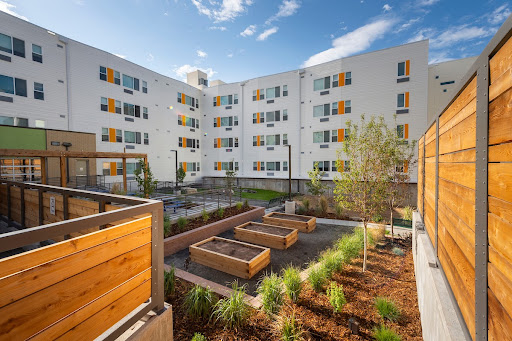The Impact of Trauma-Informed Design on Healing Spaces
Core Concepts
Trauma-informed design in housing aims to create safe and healing spaces for individuals with traumatic histories by incorporating adaptations that support a strengths-based framework.
Abstract
"Home" isn't always a place of healing, especially for those with traumatic pasts. The concept of trauma-informed design is gaining traction, emphasizing the importance of the built environment on health. Spaces like Arroyo Village in Denver are exemplars of how thoughtful design can promote well-being and connection to the environment, ultimately aiding in healing and recovery. However, there is a need to address racial trauma and ensure that marginalized communities benefit from these practices as well.
What Is Trauma-Informed Design?
Stats
Denver’s Arroyo Village includes 60-bed homeless shelter, 35 units of low-income permanent supportive housing, and 95 units of affordable housing.
13 affordable housing projects in Denver's development pipeline will produce 1,021 units of affordable housing.
Sanderson Apartments in Denver opened in 2017 as a model for implementing trauma-informed practices in affordable housing.
Quotes
"In so many ways trauma-informed approaches have been for the benefit of a particular class or focus, situated in power." - Abdul-Qadir Islam
"People are saying enough is enough." - Abdul-Qadir Islam
"The fear and uncertainty caused by the pandemic is universal, and our collective need to address that, and other traumas, is undeniable."
Key Insights Distilled From
by at nextcity.org 02-26-2024
https://nextcity.org/urbanist-news/what-is-trauma-informed-design
Deeper Inquiries
How can trauma-informed design principles be more inclusive towards Black, Brown, and Indigenous communities?
Trauma-informed design principles can become more inclusive towards Black, Brown, and Indigenous communities by actively involving these communities in the design process. This includes listening to their experiences, needs, and preferences when creating spaces that are meant to promote healing. By incorporating culturally relevant elements into the design, such as symbols or materials that hold significance for these communities, designers can ensure that the spaces feel welcoming and safe for all individuals. Additionally, addressing historical traumas specific to these groups within the built environment can help create a sense of understanding and validation.
What challenges might arise when implementing trauma-informed design practices on a larger scale?
One challenge that may arise when implementing trauma-informed design practices on a larger scale is the need for significant resources and funding to support such initiatives. Designing spaces with empathy and sensitivity requires additional time, expertise, and investment compared to traditional approaches. Another challenge is ensuring consistency in applying trauma-informed principles across different projects and locations. It may also be challenging to shift existing mindsets within organizations or industries towards prioritizing mental wellness in architectural designs.
How can spaces designed with empathy help address societal traumas beyond individual experiences?
Spaces designed with empathy have the potential to address societal traumas beyond individual experiences by creating environments that foster connection, healing, and community support. These spaces serve as hubs where residents can come together to share their stories, find common ground in their struggles, and collectively work towards healing from shared traumas. By promoting inclusivity and understanding among diverse groups of people within these spaces through thoughtful design elements like open gathering areas or natural light-filled rooms - they contribute positively not only to individual well-being but also facilitate broader social healing processes at a community level.
0
